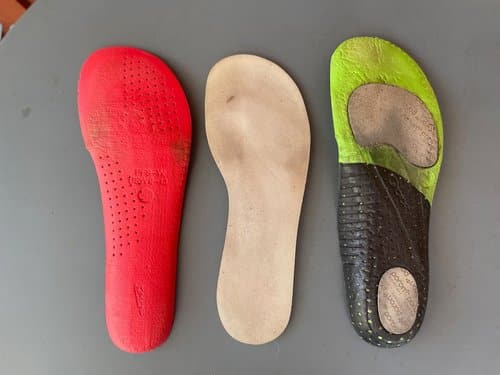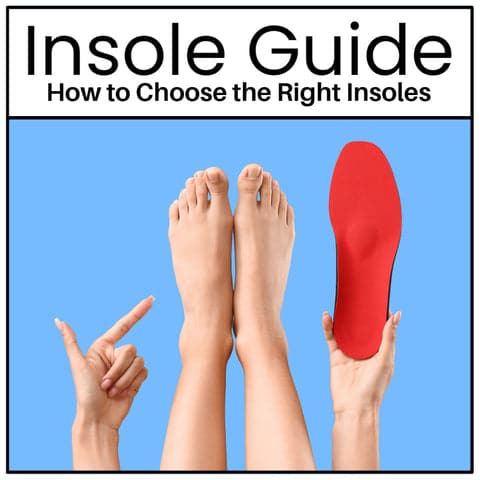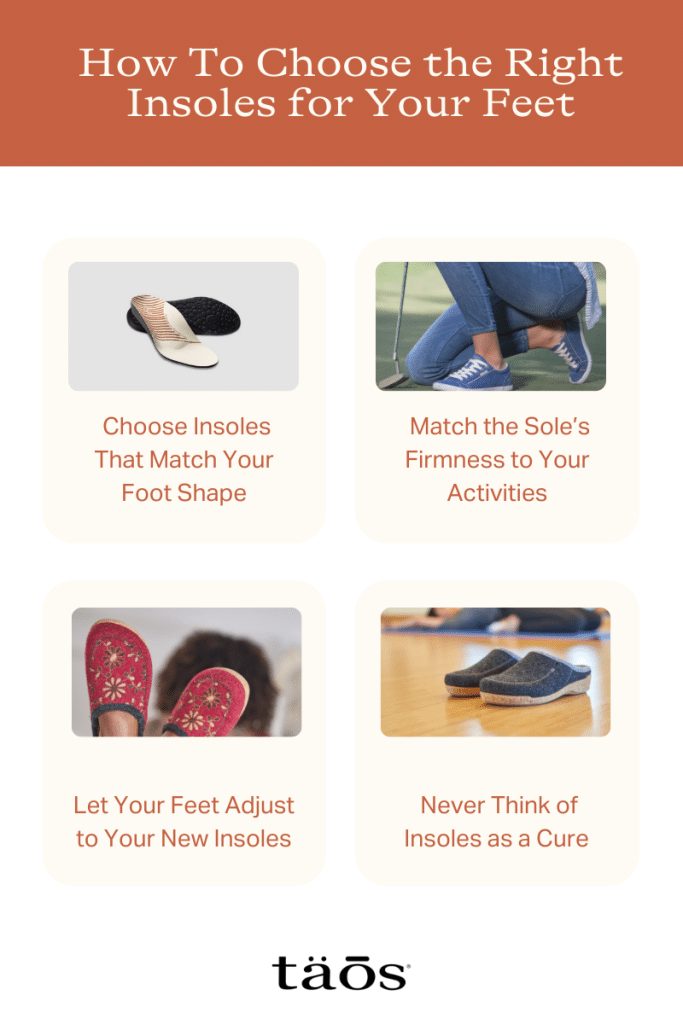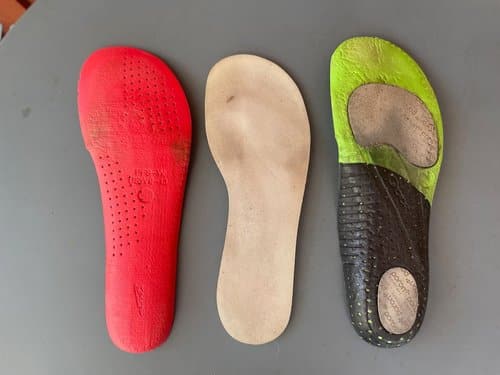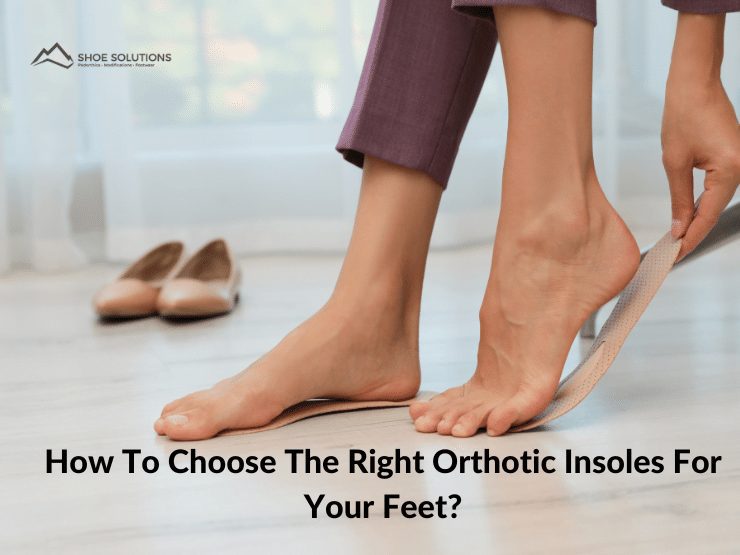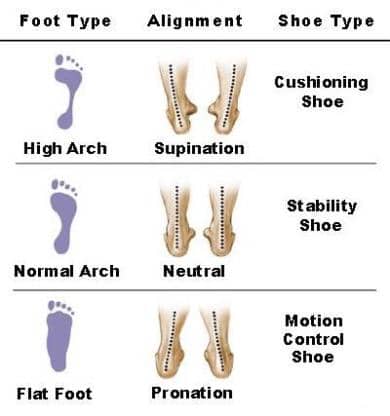Trying to find the perfect fit for our shoes can sometimes feel like a never-ending puzzle. We’ve all experienced the discomfort of ill-fitting shoes, and often the culprit lies in the lack of proper support. That’s where insoles come in. But with so many options available, how do we choose the right ones for our specific needs? In this article, we’ll explore the ins and outs of selecting the perfect insoles that will not only provide the comfort we crave but also enhance the overall health of our feet.
Material
Understanding Different Insole Materials
When it comes to choosing the right insoles for your shoes, understanding the different materials available is essential. Insoles can be made from a variety of materials, each offering unique benefits and features. Some common materials include foam, gel, leather, and cork.
Foam insoles are lightweight and provide cushioning for the feet. They offer good shock absorption and can help distribute pressure evenly across the foot. Gel insoles are known for their excellent cushioning properties. They can absorb impact and provide added comfort, especially for those suffering from foot pain or conditions like plantar fasciitis.
Leather insoles are durable and provide a natural feel. They offer excellent moisture absorption and help prevent foot odor. Cork insoles are another popular choice, known for their ability to conform to the shape of the foot over time. They provide good arch support and cushioning.
Evaluating Your Foot Needs
Before selecting the material for your insoles, it is important to evaluate your foot needs. Consider factors such as arch type, cushioning requirements, foot condition, and the level of support you need.
Choosing the Right Material for Your Foot Type
Once you have evaluated your foot needs, you can choose the right material for your insoles. If you have a high arch, you may benefit from insoles with good arch support, such as gel or foam materials. For those with flat feet, materials like leather or cork can help provide extra support and stability. If you have sensitive feet or are prone to foot pain, gel or foam insoles with added cushioning can be a great choice.
Arch Support
Identifying Your Foot Arch
Before selecting insoles with appropriate arch support, it is important to identify your foot arch type. There are three main types of foot arches: high, neutral, and flat. To determine your arch type, you can perform a simple wet foot test.
Determining the Level of Arch Support You Need
Once you know your foot arch type, you can determine the level of arch support you need. A high-arched foot requires more support in the arch area to help alleviate pressure and distribute weight evenly. In contrast, flat feet require insoles with significant arch support to provide stability and prevent overpronation. Neutral-arched feet can benefit from insoles with moderate arch support.
Selecting Insoles with Appropriate Arch Support
After determining the level of arch support you need, you can select insoles that provide the appropriate level of support. Many insoles are specifically designed to cater to different arch types. Look for insoles labeled as “high arch support,” “neutral arch support,” or “flat feet support” to find the right fit for your feet.
Cushioning
Assessing Your Cushioning Requirements
When choosing insoles, it is important to assess your cushioning requirements. Some individuals may need extra cushioning to alleviate foot pain or provide added comfort. Others may require minimal cushioning if they have good foot health.
Considering the Impact of Activities on Cushioning Needs
The impact of your activities on your cushioning needs is also important to consider. If you engage in high-impact activities like running or jumping, you may require insoles with superior shock absorption and cushioning. On the other hand, if you have a less active lifestyle, you may not need as much cushioning.
Matching Insole Cushioning to Your Activity Level
To ensure maximum comfort and support, it is crucial to match your insole cushioning to your activity level. Look for insoles with varying degrees of cushioning, ranging from soft to firm. Those engaging in high-impact activities will benefit from insoles with excellent shock absorption and cushioning, while individuals with a more sedentary lifestyle may prefer insoles with moderate cushioning.
Size and Fit
Measuring Your Feet Correctly
To choose the right insoles, it is essential to measure your feet correctly. Use a measuring tape or a ruler to measure the length and width of your feet. Make sure to measure both feet, as they may differ in size.
Finding Insoles that Match Your Shoe Size
Once you have determined your foot measurements, you can find insoles that match your shoe size. Insoles are typically available in various sizes, ranging from small to extra-large. Refer to the manufacturer’s size chart to select the appropriate size.
Understanding the Importance of Proper Insole Fit
Proper insole fit is crucial for optimal comfort and support. Ill-fitting insoles can cause discomfort and may not provide the desired benefits. Ensure that the insoles align properly with the contours of your feet and fit comfortably within your shoes. If needed, trim the insoles to achieve the perfect fit.
Foot Condition
Identifying Common Foot Conditions
It is important to identify common foot conditions, as they can affect your choice of insoles. Conditions such as plantar fasciitis, heel spurs, metatarsalgia, and overpronation may require specific insoles designed to alleviate symptoms and provide relief.
Consulting a Healthcare Professional
If you have a diagnosed foot condition or experience persistent foot pain, it is advisable to consult a healthcare professional. They can provide guidance and recommend specialized insoles tailored to your specific condition.
Selecting Insoles Designed for Specific Foot Conditions
For individuals with specific foot conditions, selecting insoles designed to address those conditions is crucial. Many insoles are available in the market that cater to conditions like plantar fasciitis or flat feet. These insoles are specifically designed to provide targeted support, cushioning, and alignment to help alleviate symptoms and promote foot health.
Durability
Evaluating Insole Lifespan
When choosing insoles, it is important to evaluate their lifespan. Some insoles may be more durable and long-lasting than others. Factors such as the material used and the construction of the insoles can impact their durability.
Considering Your Usage Frequency
Consider your usage frequency when evaluating insole durability. If you plan to use the insoles daily or for high-impact activities, opt for more durable options that can withstand frequent wear and tear. If you require insoles for occasional use or less demanding activities, you may opt for insoles with a shorter lifespan.
Choosing Insoles with Longevity
To ensure your insoles last longer, choose options known for their durability. Look for insoles with reinforced edges, sturdy construction, and materials that can withstand prolonged use. Additionally, proper care and maintenance, such as regular cleaning and allowing them to dry fully, can help extend the lifespan of your insoles.
Breathability
Understanding the Importance of Foot Ventilation
Foot ventilation is crucial for overall foot health and comfort. Proper airflow helps prevent excessive moisture buildup, reduces the risk of fungal infections, and keeps your feet feeling fresh.
Exploring Breathable Insole Options
When choosing insoles, explore options that offer breathability. Look for insoles made with breathable materials such as mesh or perforated foam. These materials allow airflow and promote ventilation, reducing the likelihood of sweaty or smelly feet.
Deciding on the Right Level of Breathability
The level of breathability needed in your insoles may vary depending on individual preferences and foot perspiration levels. If you tend to have sweaty feet, opt for insoles with higher breathability. However, if you have naturally dry feet, insoles with moderate breathability may suffice.
Insole Type
Differentiating Between Full-Length and Half-Length Insoles
Insoles come in two main types: full-length and half-length. Full-length insoles extend from the heel to the toe and provide support and cushioning for the entire foot. Half-length insoles only cover the heel and arch area, leaving the toe section of the shoe free.
Determining the Correct Insole Type for Your Shoes
To determine the correct insole type for your shoes, consider the space available within your shoes and your specific foot needs. Full-length insoles are ideal for shoes with ample space and can provide comprehensive support. Half-length insoles are suitable for shoes with limited space or where you require targeted support.
Considering Custom-Made Insoles
For individuals with unique foot conditions or specific requirements, custom-made insoles may be a suitable option. These insoles are specially crafted to match the contours of your feet and provide personalized support and comfort. If off-the-shelf insoles do not meet your needs, consulting a podiatrist or foot specialist for custom-made insoles can be beneficial.
Insole Thickness
Analyzing the Space Available in Your Shoes
Before selecting insole thickness, analyze the space available in your shoes. Insoles that are too thick may lead to a cramped fit and discomfort. Measure the interior depth of your shoes to ensure compatibility with the desired insole thickness.
Deciding on the Appropriate Insole Thickness
The appropriate insole thickness depends on personal preference, foot type, and the level of comfort desired. Thicker insoles generally provide more cushioning and shock absorption, while thinner insoles offer a more natural feel. Strike a balance between comfort and shoe fit to find the appropriate insole thickness for your needs.
Balancing Comfort and Shoe Fit
When deciding on insole thickness, it is crucial to strike a balance between comfort and shoe fit. Ensure that the thickness of the insoles does not compromise the fit of your shoes, as tight or ill-fitting footwear can lead to discomfort and foot issues. Experiment with different insole thicknesses to find the perfect balance for your feet and shoes.
Price
Setting a Budget
Before embarking on the journey of choosing insoles, it is important to set a budget. Insoles can vary in price, from affordable options to more expensive ones. Determine how much you are willing to spend on insoles, keeping in mind your foot needs and long-term benefits.
Considering the Cost-Effectiveness of Insoles
When evaluating the cost-effectiveness of insoles, consider the level of support, comfort, and durability they offer. While some inexpensive insoles may provide immediate relief, they may wear out quickly, requiring frequent replacements. On the other hand, higher-priced insoles may offer exceptional quality, longevity, and customized features. Weigh the benefits against the cost to make an informed decision.
Balancing Price with Quality
In choosing insoles, it is essential to balance price with quality. Expensive insoles may not always guarantee superior performance, while cheaper options may lack durability and adequate support. Look for insoles that offer a good balance of price and quality, providing the necessary features and benefits within your budget.
By considering the material, arch support, cushioning, size and fit, foot condition, durability, breathability, insole type, insole thickness, and price, you can choose the right insoles for your shoes. Remember to prioritize your comfort, foot health, and individual needs to find the perfect pair of insoles that will support you every step of the way.

